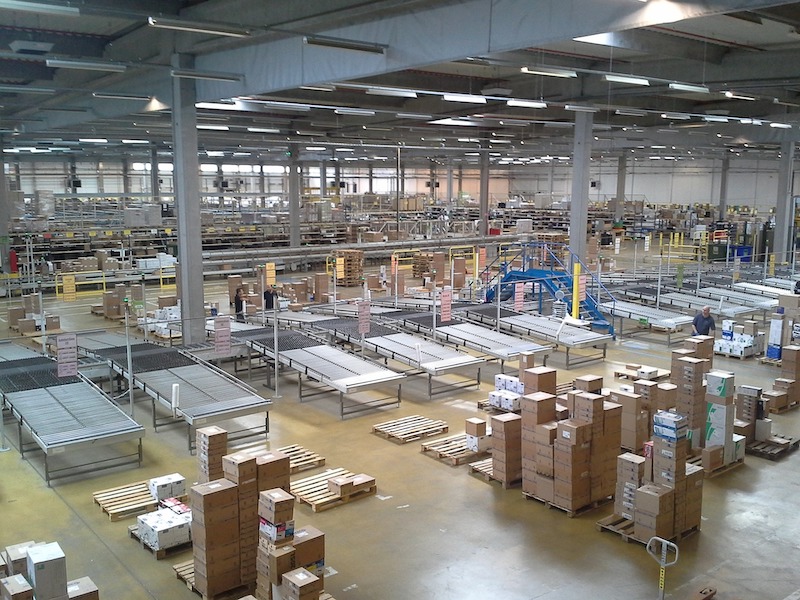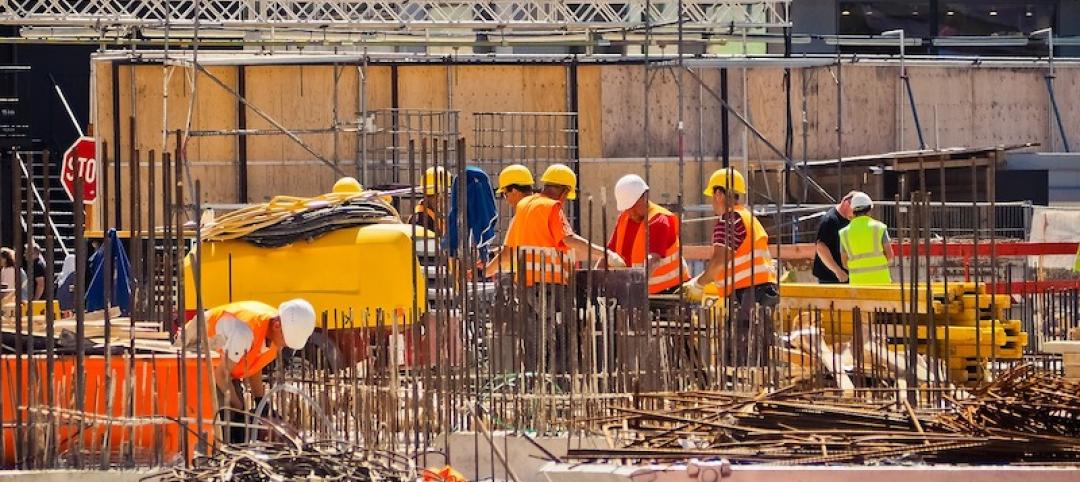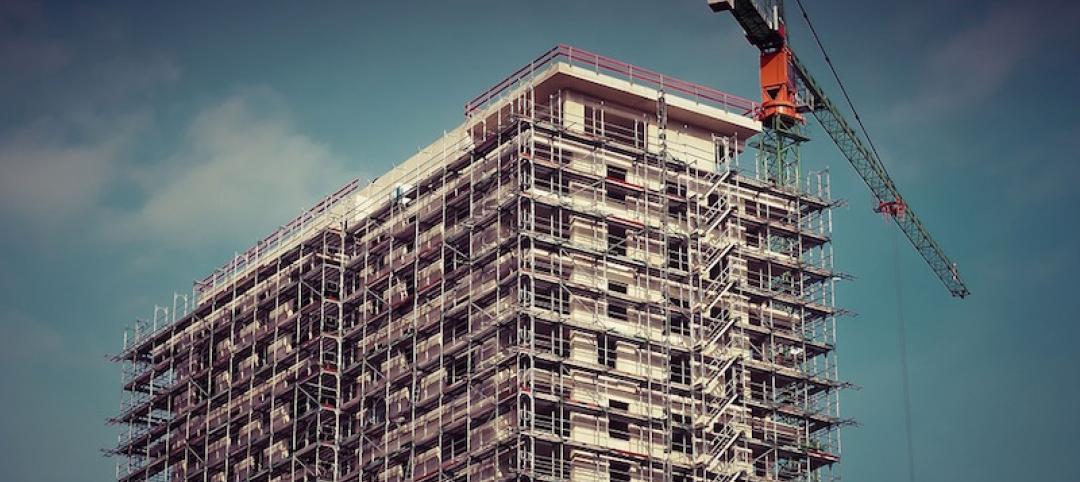The GDP, which in 2020 contracted for the first time in 11 years, is expected to grow by 6.5% in 2021, and keep growing (albeit at a slower pace) in the proceeding two years. In 2021, the U.S. should recover about 60% of the 9.42 million jobs it lost last year, and pick up another 5.1 million jobs over the following two years. Consequently, the unemployment rate is expected to recede to 4% by the end of 2023, close to where it was pre-pandemic.
This economy and jobs picture, coupled with positive predictions about inflation, interest rates, and capitalization rates, sets the stage for the Urban Land Institute’s Real Estate Economic Forecast, released on May 19, which sees a sector poised to rebound, led by returns from single-family, hotel, and industrial assets. The biggest red flag is the office sector, whose national vacancy rates are expected to rise by a higher-than-usual three-year average, but to also recover starting in 2023.
The forecasts for 27 economic and real estate indicators, published in this report, ULI’s 19th, are derived from a survey this spring of 42 economists and analysts from 39 real estate organizations.
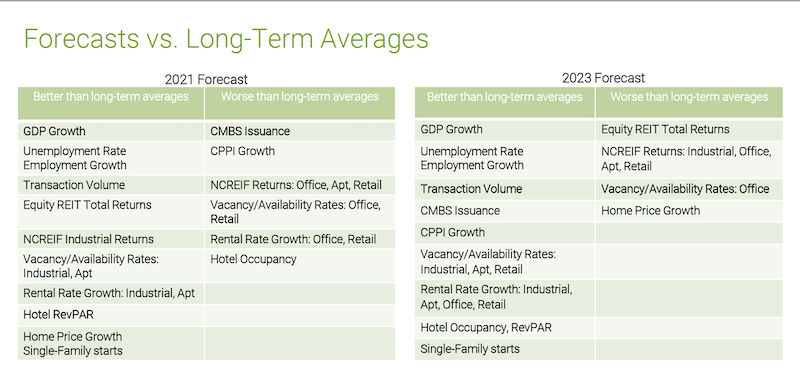
Commercial real estate should benefit from a strong economy through 2023. Graphic: ULI
Among the report’s notable findings are these:
• Commercial real estate transaction volume should recover quickly. It is expected to hit $500 billion this year and $550 billion next year. (The latest peak was $598 billion in 2019.) Commercial mortgage-backed securities issuance is projected at $70 billion this year, and to rise to $90 billion in 2023, exceeding the 20-year $82 billion average.
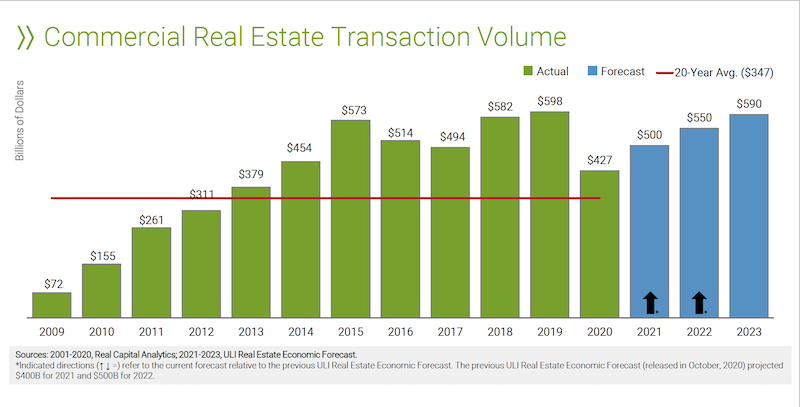
Transaction volume from real estate is expected to approach pre-pandemic levels again by 2023. Chart: ULI
• Price growth, as measured by the RCA Commercial Property Price Index, should remain below the 2020 level during all three proceeding years. The good news is that ULI is forecasting 5% increases in each of the next two years.
• Rent growth will be similarly volatile. Industrial rents will lead the pack with an average of 3.6% growth between 2021-2023. Multifamily rents will also rise, but office and retail rents are expected to stay in the negative column for a while.
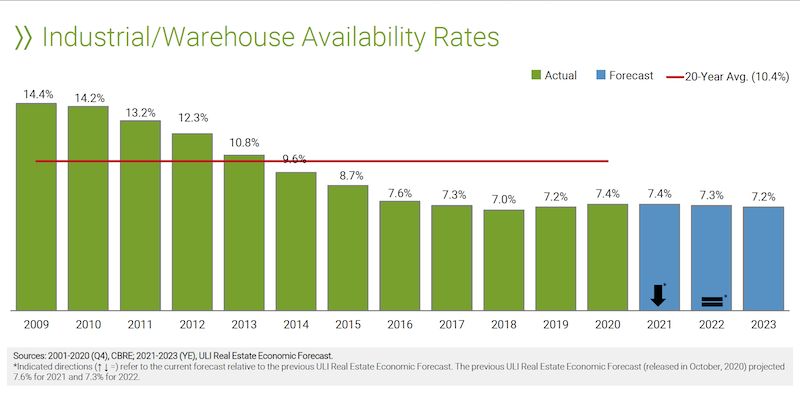
As demand for industrial space increases, so will its rental rates. Charts: ULI
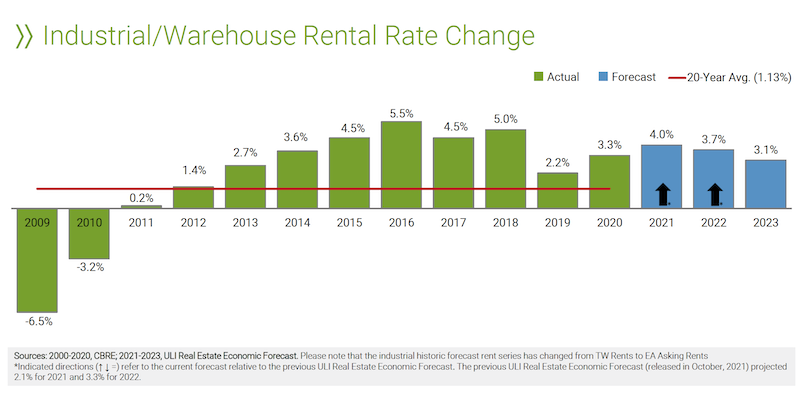
• The report looks at potential vacancy rates for five property types. Availability of warehouses and apartments is expected to remain below their 20-year averages over the next three years. Offices, on the other hand, will see vacancy rates rise to a three-year average of 16.2%, substantively above the sector’s 14.3% 20-year average. Retail vacancy rates, somewhat surprisingly, are projected to average 9.8%, below the sector’s 9.9% 20-year average.
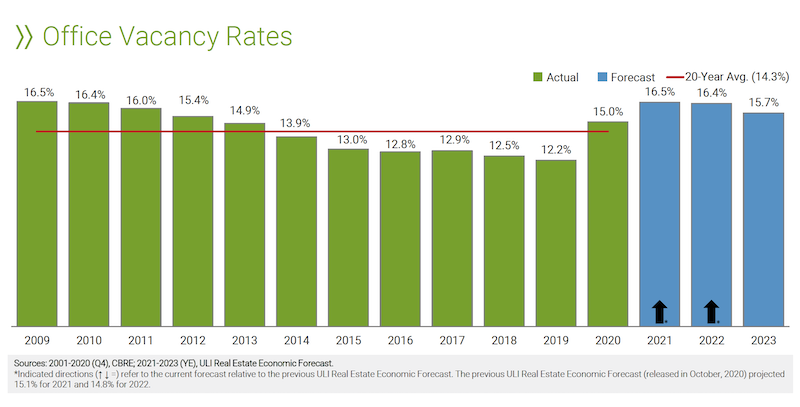
The office sector will have high vacancy rates for at least the next two years. Chart: ULI
• Last year, housing starts exceeded their 20-year average for the first time since the 2008-10 financial crisis. They are expected to hit 1.1 million units this year, and 1.2 million in 2022 and 2023.
• Real estate returns, as measured by the National Council of Real Estate Investment Fiduciaries, are forecast at 4.5%, 5.9%, and 6.5%, respectively, for 2021-2023. Industrial should lead all property types, but even office and retail are projected to generate positive returns.
Related Stories
Market Data | Aug 16, 2016
Leading economists predict construction industry growth through 2017
The Chief Economists for ABC, AIA, and NAHB all see the construction industry continuing to expand over the next year and a half.
Healthcare Facilities | Aug 9, 2016
Key strategies to reduce healthcare facility costs and maintain operations
The right approach during the planning, design, and construction of a new facility can yield a positive return on investment and lower the overall cost basis for ongoing operations, writes Steve Higgs, Senior Managing Director with CBRE Healthcare.
Laboratories | Aug 8, 2016
The lab of the future: smaller, flexible, tech-enabled, business focused
A new CBRE report emphasizes the importance of collaboration and standardization in lab design.
Industry Research | Aug 5, 2016
47 states experienced improvement in year-over-year construction unemployment rates in June
The drop in the construction unemployment rate from June 2015 extends the uninterrupted monthly sequence of year-over-year rate decreases that started in October 2010, according to Bernard M. Markstein, PhD, President and Chief Economist of Markstein Advisors.
Industry Research | Aug 2, 2016
Nonresidential construction spending declines again in June
On a year-over-year basis, nonresidential construction spending has fallen 1.1 percent, marking the first annual decline since July 2013
Industry Research | Jul 26, 2016
AIA consensus forecast sees construction spending on rise through next year
But several factors could make the industry downshift.
Industry Research | Jun 15, 2016
Survey: Americans avoid touching handles but use their phones in public bathrooms
Bradley’s 2016 Healthy Hand Washing Survey offers insights into restroom use.
Industry Research | May 11, 2016
Why corporate bathrooms stink and how good design can fix this
Despite their importance, bathrooms are often overlooked when it comes to building design. Gensler's Johnathan Sandler spoke with people in the industry and detailed some of the biggest gripes.
Big Data | May 5, 2016
The Center for Neighborhood Technology has launched the largest source of transit data in the country
AllTransit analyzes the social benefits of good transit service by analyzing data related to health, equity, and economic development.
Industry Research | May 5, 2016
National survey reveals offices aren’t built to benefit employees
A Saint-Gobain and SageGlass Work Environment Survey found insufficient access to daylight, poor air quality, and distracting noise at workplaces as the major issues experienced by employees


